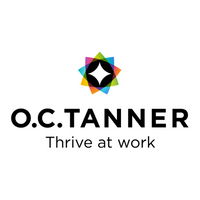Psychological safety: six ways it can lead to hyper-performance

But, walk on to any jobsite, or into any office space and try to find evidence that an organisation is concerned about psychological safety. Good luck finding anything revealing. It’s not easy to pinpoint.
Psychological safety might feel like a new concept to many of us – especially those of us who can tell sensational stories about horrible places we may have worked – with verbally abusive bosses, manipulating team members or oppressive cultures.
In fact, the concept of ensuring psychological safety might actually feel like an overreaching assumption to many of us – those of us who actually want to tell other employees to quit whining, pick yourself up and stop being so emotional at work. But, that assumption would be a grave mistake – because psychological safety isn’t just about hurt feelings, timid voices and oversensitivity. It can actually be a major factor leading to hyper-performance – in individuals and cultures.
Of course, while the threats of interoffice bullying, exclusion and intimidation are real – and they actually create physiological responses – the opposite of negative interactions are also true. Consider this: research at the University of California, Irvine, conducted by Sally S. Dickerson, Peggy J. Mycek, and Frank Zaldivar, found that: “the highest rise in cortisol levels – the hormone most responsible for the fight or flight response – occurs from ‘threats to one’s social self, or threat to one’s social acceptance, esteem and status.’”
This makes perfect sense at work. But, what if we flip the situation. What if instead of focusing on everything that could go wrong with psychological safety, we instead focus on everything that could go right – we, as leaders, take the responsibility of ensuring that all employees feel absolutely safe. Instead of looking over shoulders to see what people might be doing wrong, we make the assumption that they’re doing exactly what we hired them to do. And, instead of creating fear and anxiety that mistakes might be made, we challenge them to take risks, change the way we work for the better and innovate (knowing full well, that mistakes will be made and failures will happen).
How do you, as a leader, help create hyper-performance by making an employee feel safe at work?
1. Reframe blame into ownership. Most employees (there may be a few exceptions) know when they’ve dropped the ball. Most likely they’re already frustrated and hearing about everything they did wrong is not going to help the situation. But, this doesn’t mean mistakes shouldn’t be addressed. Instead of placing blame, grant ownership. View everything the employee learned as valuable insight into the next approach.
2. Let people do awesome work. Psychological safety at work means feeling comfortable to do your best work. Employees enter the workplace believing that they can offer value, elevate outcomes and be awesome. Give people the autonomy to become what you hired them to do – to be their best.
3. Listen, even when they’re not talking. Communication is a constant struggle in every organisation and within every relationship. It needs to be verbally frequent and non-verbally constant. Look for non-verbal cues that an employee may not feel safe sharing their opinions, concerns and ideas. Solicit verbal conversations when people are quiet. Sometimes people simply need to know they have permission to share.
4. Focus, every day, on effort. It’s easy to define effort as energy expelled, sweat, or hours at the office. But, it’s also important to recognise an employee’s mindfulness as effort. Do they arrive each day with new ideas? Are they giving discretionary effort to care for team members? Are they self-educating by researching aspects that relate to their role, your competition, or their self-improvement. By recognising and praising these efforts, you will help create a sense of psychological safety.
5. Believe in humankind. Trust can often be elusive in today’s world. And, by no means are we suggesting that anyone naively trust every individual. But, realise that your employees will know if you generally have mistrust for human kind. Don’t forget that most people want to do good things. They want to succeed. They have good intentions. Believing in humankind as whole, and communicating that belief will help create a sense of psychological safety.
6. Everyone wants to feel appreciated for the work they do. They want people to cheer for their success. And, when it comes to psychological safety, applause might be the powerful tool. It not only reveals what you as a leader value, but it also simply communicates an extremely powerful message – that you’re paying attention. Cheer loudly and frequently. Silence can be just as, if not more, dangerous than verbal abuse – because within silence, an employee’s imagination can dive into absolute fear.
The concept of psychological safety may feel like a list we can ignore if we’re not demeaning or abusive. But, the opposite is actually true. Building psychological safety is something every leader should contemplate – making your people feel empowered, appreciated and able to conquer anything.
Learn from more insights from the O.C. Tanner Institute here.
The authors are David Sturt, executive vice president at O.C. Tanner and Todd Nordstrom, content director at the O.C. Tanner Institute.
This article is provided by O.C. Tanner.
Supplied by REBA Associate Member, O. C. Tanner
Giving teams the integrated tools they need when, where and how they need them.







